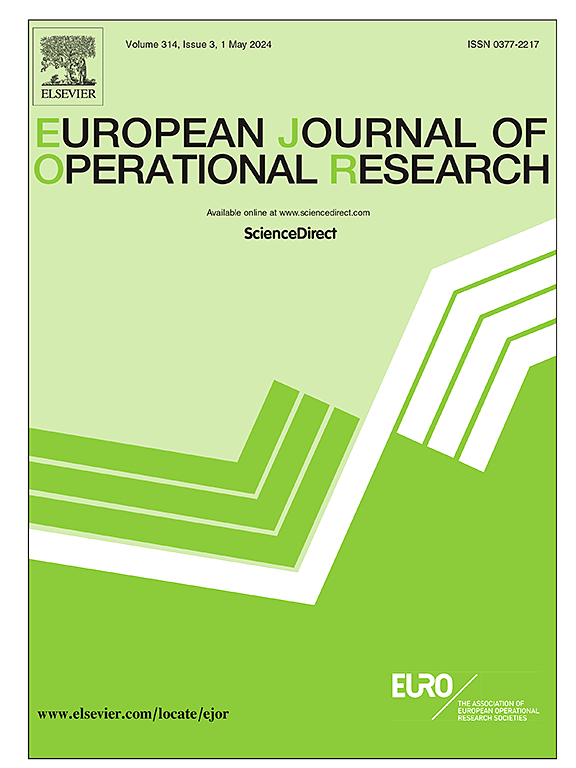An integrated model for predictive maintenance and inventory management under a reliability chance constraint
IF 6
2区 管理学
Q1 OPERATIONS RESEARCH & MANAGEMENT SCIENCE
引用次数: 0
Abstract
This paper proposes a new model that integrates opportunistic maintenance and routine maintenance to enhance the effectiveness of predictive maintenance and inventory management in complex manufacturing systems subject to a reliability chance constraint. It considers both hard and soft failure modes and their mutual dependence. When a machine experiences a hard failure, an opportunistic maintenance policy is utilized on the machine’s components. When the soft failure degradation level of a machine component surpasses a threshold, imperfect preventive maintenance or replacement maintenance is carried out. The choice of component supplier, including OEM and aftermarket suppliers, significantly impacts the joint decision model. To improve the model’s realism and applicability, a random variable representing supplier availability intervals is introduced, reflecting a more nuanced understanding of supply chain dynamics. We develop a simulation optimization method to determine the degradation thresholds for opportunistic and regular maintenance, the component inventory policy, and supplier selection. The objective is to minimize the total maintenance and inventory cost, while ensuring a high level of system reliability. The proposed algorithm effectively addresses the system reliability chance constraint by formulating a surrogate model of the quantile of system downtime. A numerical study is conducted to verify the efficacy of the proposed model and to demonstrate the efficiency of the solution method in finding the optimal feasible solution. Furthermore, the influence of critical factors in the model on the optimal policy is analyzed to derive useful managerial insights.
可靠性机会约束下的预测性维修与库存管理集成模型
为了提高可靠性机会约束下复杂制造系统预测性维修和库存管理的有效性,提出了一种机会维修和日常维修相结合的模型。它同时考虑了硬失效模式和软失效模式及其相互依赖性。当机器发生硬故障时,对机器的组件采用机会维护策略。当机器部件的软故障退化程度超过阈值时,进行不完善的预防性维护或更换维护。零部件供应商的选择,包括OEM和售后市场供应商的选择,显著影响联合决策模型。为了提高模型的现实性和适用性,引入了一个代表供应商可用性间隔的随机变量,反映了对供应链动态的更细致的理解。我们开发了一种模拟优化方法来确定机会性维护和定期维护的退化阈值,组件库存策略和供应商选择。目标是最小化总维护和库存成本,同时确保高水平的系统可靠性。该算法通过建立系统停机分位数的代理模型,有效地解决了系统可靠性机会约束问题。通过数值研究验证了所提模型的有效性,并证明了求解方法在寻找最优可行解方面的有效性。此外,分析了模型中关键因素对最优策略的影响,以获得有用的管理见解。
本文章由计算机程序翻译,如有差异,请以英文原文为准。
求助全文
约1分钟内获得全文
求助全文
来源期刊

European Journal of Operational Research
管理科学-运筹学与管理科学
CiteScore
11.90
自引率
9.40%
发文量
786
审稿时长
8.2 months
期刊介绍:
The European Journal of Operational Research (EJOR) publishes high quality, original papers that contribute to the methodology of operational research (OR) and to the practice of decision making.
 求助内容:
求助内容: 应助结果提醒方式:
应助结果提醒方式:


